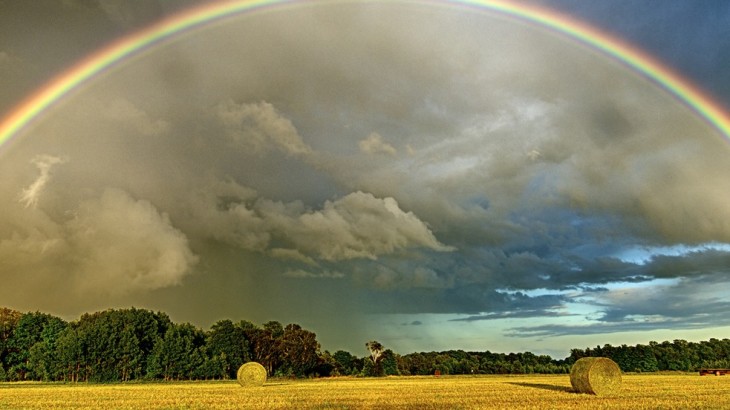The Bible uses many metaphors to teach principles. One such metaphor is the nation of Egypt which represented slavery to the system of the world, in other words, survival or dependence on man. God miraculously delivered Israel from Egypt and took his people through the desert, a place that was used to make them independent from the world’s system while simultaneously creating a deep dependence on God. Sadly, Israel’s response to God during this transition resulted in their wandering in this wilderness for 40 years rather than efficiently moving through it in 1-2 months time. The place that God was leading Israel was to the Promise Land, the land flowing with milk and honey. This was a mature place of interdependence on each other and co-laboring with the Lord.
While the desert was a place of supernatural provision, the promised land did not have manna. The promised land required the Israelites to fight for their ground; then they had to learn to produce wealth, to work hard and smart, trusting God to bring the increase and the abundance he promised.
Although it would be much easier if God just handed you millions of dollars, it would remove the satisfaction that comes from accomplishing difficult things. The easiest routes in life are rarely, if ever, the most rewarding, memorable or meaningful. As a mountaineer I have had the privilege of climbing many mountains over the years. One of the most memorable experiences was an ascent of the Silverhorn Route on Mount Athabasca, in the Canadian Rockies. As a twenty year old woman, I chose to take a 96-day mountaineering course to enhance my experience and launch my career as a wilderness guide and outdoor professional.
Although I had climbed a number of mountains prior to this ascent, this proved to be the most technical climb I had yet done. For our alpine start we arose at 3:00 am so that we could be on the trail at 4:00 am. For two hours we hiked higher and higher through the huge moraines,* and then for the first two hours of daylight we climbed across the glacier to the base of the route, our crampons gripped the ice and gave us sure footing. There we put on harnesses and roped up, beginning our multi-pitch** ascent. The climb demanded resolute focus, efficient movement, and unfailing strength, as our team moved with a unity of purpose.
Finally, around noon we stood on the summit at 11,453 feet, celebrating with lunch and photos. Like all great summits, ours was constrained by imminent weather, and the fact that the descent, often most dangerous part of the journey remained. Although our descent was non-technical, and a rather comparatively safe walk off the backside of the mountain, it still took over four hours. At the time, it was the longest and most exhaustive day of my life. Yet, the experience was unforgettable and one of the most empowering things I had ever done. That feeling could not be bought with money and it could not be given; it could only be earned through hard work, teamwork, and by risking my life; the proverbial, blood, sweat, and tears.
Could it not be that the Lord who uniquely created and designed us, understands that when we exercise the power to get wealth, and “climb” the mountain, the reward will be so much sweeter than if we were to drive or take a tram?The promised land is about empowerment. It is about being more than dependent on God for provision. It is about co-laboring with him to produce great harvests.
*An accumulation of boulders, stones, or other debris carried and deposited by a glacier.
**Multi-pitch climbing is the ascent of climbing routes with one or more stops at a belay station. Each section of actual climbing between stops at the belay stations is called a pitch. The leader ascends the pitch, placing gear and stopping to anchor themselves to the belay station.
Double Rainbow – Photo credit: elviskennedy via photopin cc









